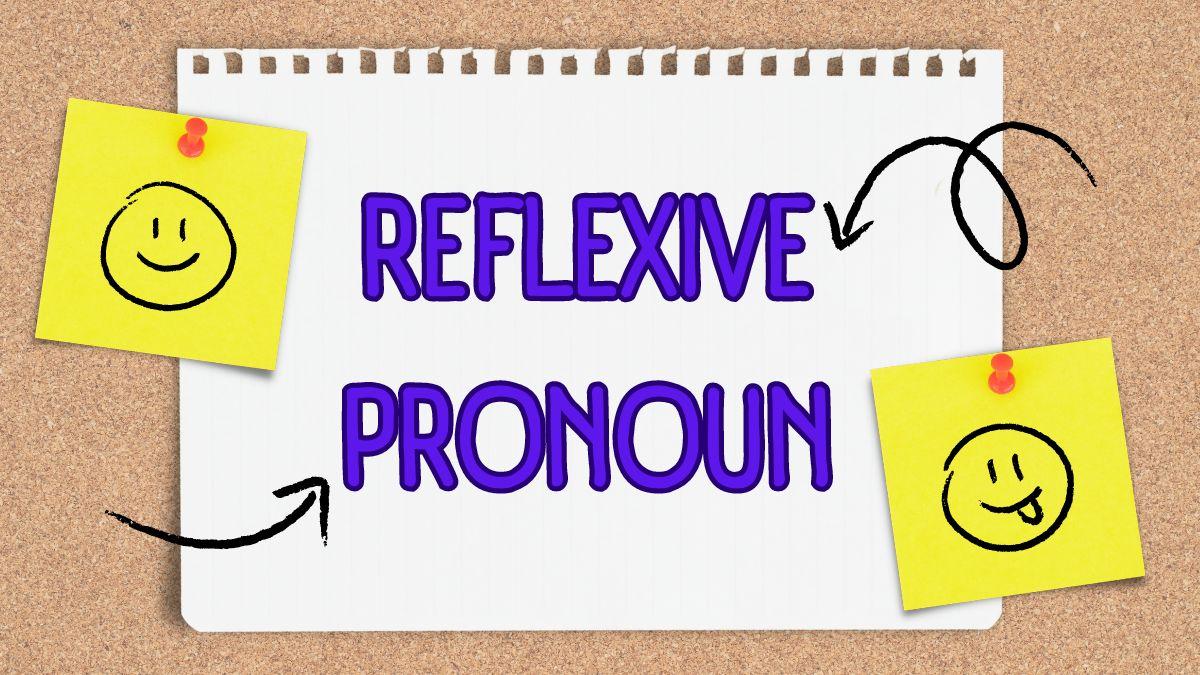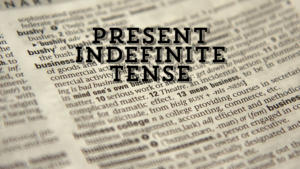Table of Contents
Reflexive Pronoun
Reflexive pronouns are words ending in -self or -selves that are used when the subject and object of a sentence are the same (eg I believe in myself). It can act as an object or an indirect object. The nine reflexive pronouns in English are me, yourself, himself, herself, oneself, himself, ourselves, yourselves, and themselves.
Reflexive Pronoun Definition
According to Collins Dictionary, “Reflexive pronouns are pronouns such as ‘myself’ that refer to the subject of a sentence or clause. For example, in the sentence “She made yourself a cup of tea”, the reflexive pronoun “herself” refers to “she”.
The Merriam-Webster Dictionary defines a reflexive pronoun as “a pronoun that refers to the subject of a clause, clause, or verb phrase.”
Reflexive Meaning
Reflexive meaning refers to a linguistic or grammatical construction in which the subject of a sentence or clause is also the recipient of the action described by the verb. In other words, it involves actions that a subject performs on or for themselves. Reflexive constructions are common in many languages and are used to express various concepts, including self-action, self-interest, self-awareness, or self-reference.
In English, reflexive pronouns are often used to indicate reflexive meaning. These pronouns include “myself,” “yourself,” “himself,” “herself,” “itself,” “ourselves,” “yourselves,” and “themselves.” For example:
- She washed herself before going to the party.
- He hurt himself while playing soccer.
- We need to take care of ourselves.
In these sentences, the reflexive pronouns (herself, himself, ourselves) indicate that the subject is performing an action on themselves.
Reflexive constructions are not limited to actions involving physical contact with oneself. They can also convey more abstract ideas, such as self-reflection or self-improvement. For example:
- He thought long and hard about himself and his goals.
- She decided to challenge herself by taking on a new project.
In these cases, the reflexive construction is used to convey a sense of introspection or self-directed action.
It’s important to note that not all languages use reflexive constructions in the same way, and the specific rules and forms for expressing reflexive meaning can vary from one language to another.
Reflexive Pronoun Examples
Look at the following table for easy understanding of these special pronouns. By looking at the table, you can easily known how to make reflexive pronouns from personal pronouns.
|
PERSONAL PRONOUN |
REFLEXIVE PRONOUN |
| I | MYSELF |
| WE | OURSELVES |
| THEY | THEMSELVES |
| HE | HIMSELF |
| SHE | HERSELF |
| YOU | YOURSELF |
| IT | ITSELF |
| ONE | ONESELF |
Some more examples are given below:
- “Myself” works with “I.”
- “Yourself” works with the singular form of “you.”
- “Yourselves” works with the plural form of “you.”
- “Himself” works with “he.”
- “Herself” works with “she.”
- “Itself” works with “it.”
- “Ourselves” works with “we.”
- “Themselves” works with “them.”
- “Oneself” works with “one”
What are the 10 examples of Reflexive Pronoun?
Look at the 10 best examples of reflexive pronoun in English Grammar below.
- I saw myself in the mirror.
- we are preparing the dinner for ourselves.
- They made the decorations themselves.
- He wanted to impress his mother, so he baked the cake himself.
- She prepared herself for the test.
- You must do this work yourself.
- The wound healed itself.
- One should complete one’s work oneself.
- You are too young to cook by yourselves.
- The actors saved the local theatre money by playing several roles themselves.
Reflexive Pronouns Examples with Proper Explanation
A reflexive pronoun is used to denote that an action is done and received by the same subject. It reflects the action on itself and doesn’t involve another object. In a very nutshell, a reflexive points out that the doer and the receiver of the action are one and the same in a sentence.
Reflexive pronouns may seem unnecessary in some situations, but they are very useful for clarity when using the third person plural form of pronouns. It also helps highlight the fact that the task is being done by that specific person.
Example 1:– He looked at him.
He looked at himself.
In the example given above, there is some ambiguity in the use of “him” in the first sentence. It is not certain whether “he” refers to someone else or he refers to himself. This is where reflexive pronouns prove very useful in providing complete meaning.
Example 2:- I learned to bake a cake myself.
I learned to bake a cake.
In Example 2, the first sentence suggests that learning to bake was done alone and without assistance, whereas the second sentence suggests that the subject could have had someone else help them learn to bake. It may lead the reader to believe that there is potential.
Example 3: It is a fact that you know yourself and your potential.
In the above example, it is evident that the subject knows oneself more than anyone else.
Example 4: Tulika and Ashu have been preparing themselves for the examination.
Tulika and Ashu are the subjects in example 4 who happen to prepare themselves and no one else.
Example 5: Rahul was so tired of his daily routine that he decided to give himself a rest day.
In the above example, the reflexive pronoun ‘himself’ portrays the idea that the subject gave himself a rest day after having the same routine for a long period of time.
Reflexive pronoun Usage in Sentecnce
Check the following sentences to know about how to use reflexive pronouns in a sentence.
- I was in a hurry, so I washed the bike myself.
- You’re going to prepare the dinner yourself today
- He wanted to pay the fee himself.
- Jenni does the chores herself because she doesn’t like others’ work.
- You are too young to cook by yourselves.
Difference between Reflexive and Emphatic pronouns
Use reflexive pronouns when referring to the same person, animal, or thing as the subject and object of an action. For example, consider the statement “The dog covered himself with the blanket” The reflexive pronoun here is “himself.” It indicates that the action is being done against oneself. In other words, the animal took action to cover itself.
Like reflexive pronouns, emphatic pronouns are compound personal pronouns and they also refer to the object of action to the subject.
So what is the difference between the two?
Emphatic pronouns are only used to emphasize and highlight the action of the subject.
Reflexive pronouns are used to refer to the subject in a sentence or clause, while emphatic pronouns are used to emphasize their predecessor (noun or pronoun).
For example:-
| REFLEXIVE PRONOUN | EMPHATIC PRONOUN |
| I have learned it myself. | I myself have learned it. |
| Monika cleaned the room herself. | Monika herself cleaned the room. |
Reflexive Pronoun Exercises
Q.1 Fill in myself, yourself, himself,… into the gaps.
1. Cindrella saw …………….in the mirror.
2. Jerry can paint the picture …………because he’s good at painting.
3. The students did the washing up……….
4. I like to watch …………..in a movie.
5. Ashu and Tishu did their homework…………
6. Joe, did you bake the cake………..?
7. The members opened the parcels…………..
8. Susi made a video film about dogs……………
9. John, can you find the way to the mall…………..?
10. My uncle built the tree house…………..
Check yourself:
- herself
- himself
- themselves
- myself
- themselves
- yourself
- themselves
- herself
- yourself
- himself
Reflective Pronoun Important Points
- Reflective pronouns are used when the subject’s actions are reflected in the subject.
- Reflective pronouns are used when the subject or object of the verb is the same person or thing.
- Reflective pronouns are used after verbs with prepositions to clarify who or what is being spoken about.
- Emphatic pronouns are used to force the subject or object in a sentence.
- Even if the stressed pronoun is removed from the sentence, the sentence still has meaning.
| Related Articles | |
| Relative Pronouns | Subject Pronouns |
| Demonstrative Pronouns | Interrogative Pronouns |
| Object Pronouns | Personal Pronouns |


 Present Indefinite Tense: Formula, Exerc...
Present Indefinite Tense: Formula, Exerc...
 Email Writing Format for Class 10- Check...
Email Writing Format for Class 10- Check...
 Letter Writing in English, Types, Tips, ...
Letter Writing in English, Types, Tips, ...






























